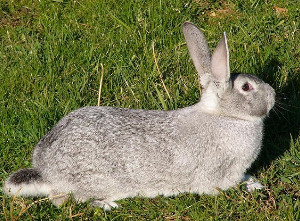Grigio di Carmagnola (I)
Description
It is the only breed of Piedmontese rabbit of which some traces have remained: widespread until the end of the 1950s and then practically disappeared until the work of genetic recovery carried out by the Department of Zootechnical Sciences of the University of Turin and by the Professional Institute for Agriculture and the Environment of Verzuolo. Now the city of Carmagnola, historical core of diffusion of this breed, has a "Municipal Center for the diffusion and enhancement of the Gray Rabbit of Carmagnola", to which it is possible to contact to have a pair of animals for restocking and some local breeders reproduce it with success.
As the name implies, this breed has soft, thick, gray fur (a little lighter on the belly, legs and end of the tail) with a paler triangular speck on the nape. The characteristic gray coat derives from the fact that these rabbits are related to the medium-sized Chinchilla breed.
Of medium size, with a long body and muscular loins. The very delicate health and very thin skin make it very difficult to breed in common cages: the ideal is an enclosure with a piece of grass and a small shelter in case of bad weather, away from drafts, humidity and the overcrowding of intensive farming.
Slaughter must take place when it reaches a weight between 3.5 and 5.5 kilograms for males and 3.5 and 4 kilograms for females.








